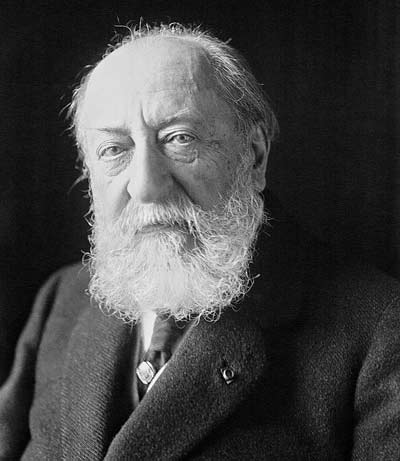Saint-Saëns, Camille (1835–1921)

Camille Saint-Saëns in 1921.
The French composer Saint-Saëns was, like Mozart and Mendelssohn, a child prodigy. His father died just after he was born, and he was brought up by his mother and an aunt who began to teach him the piano when he was two. He was composing by the age of three, and played concertos by Mozart and Beethoven when he was ten. He also showed a keen interest in other intellectual pursuits, particularly archeology, geology, astronomy, and philosophy.
Saint-Satins studied at the Paris Conservatoire, and was organist at the Madeleine Church in Paris from 1857–1876. After hearing him improvise, Liszt declared him the greatest organist in the world. In return, Saint-Saëns acknowledged Liszt's influence on his own symphonic poems of the 1870s: Le rouet d'Omphale (Omphale's Spinning Wheel), Phaeton, the enormously popular Danse macabre, and La jeunesse d'Hercule (Hercules' Youth). In 1871 he was a founder-member of the Société Nationale de Musique, set up to promote performances of works by younger French composers.
Saint-Saëns was much attached to his mother but, much to her disapproval, when he was 40 he married a girl half his age. Their two young sons died tragically within six weeks of each other, and after just six years of marriage, Saint-Saëns walked out on his wife. After his mother's death in 1888 he spent much time abroad, especially in North Africa, and many of his works, such as the Fifth Piano Concerto, make use of exotic harmonies.
His most famous and enduring works include the opera Samson et Dalila, the First Cello Concerto, the Introduction and Rondo Capriccioso for violin and orchestra, the five piano concertos, the Organ Symphony (No. 3), and Le carnaval des animaux (The Carnival of the Animals), written as a private joke for performance by friends.


